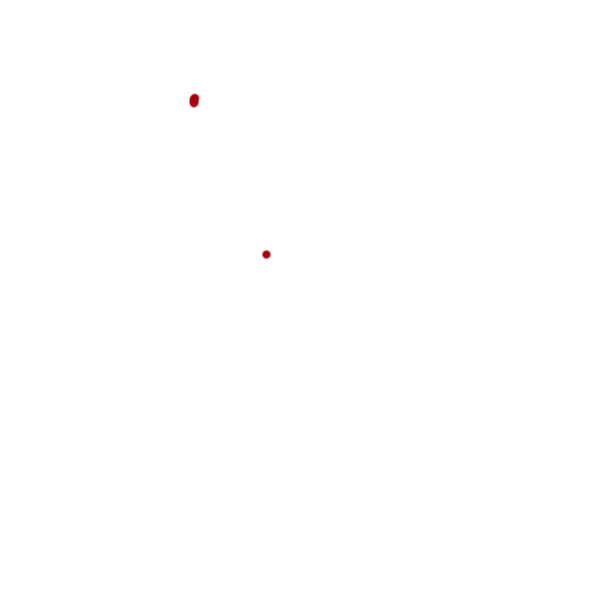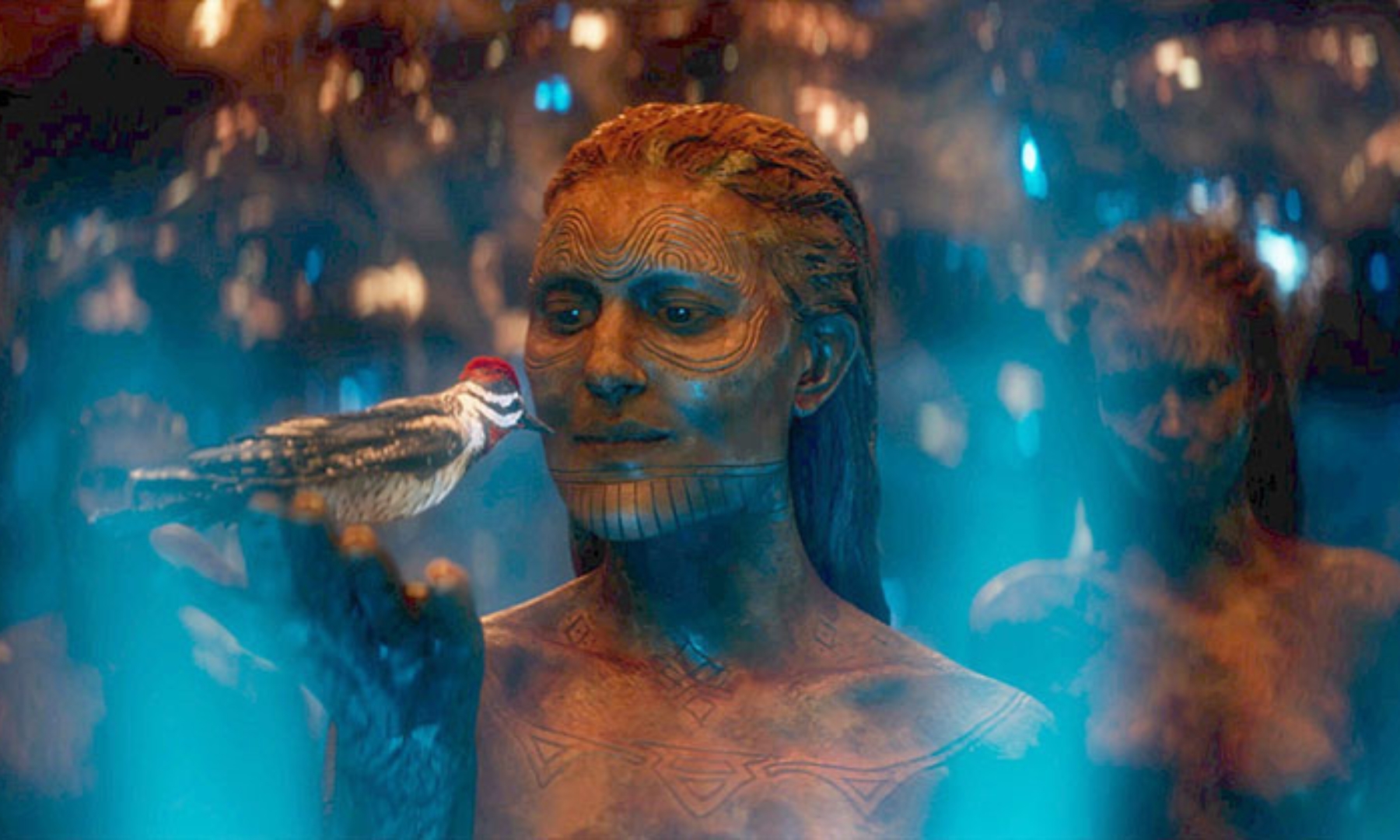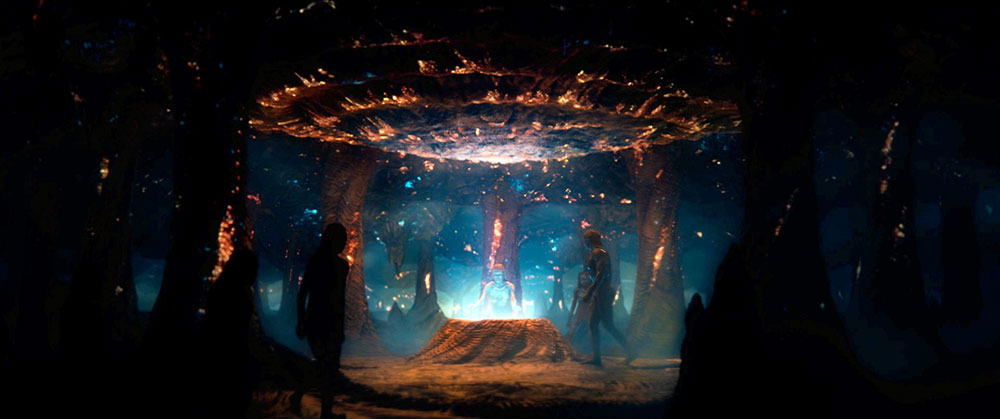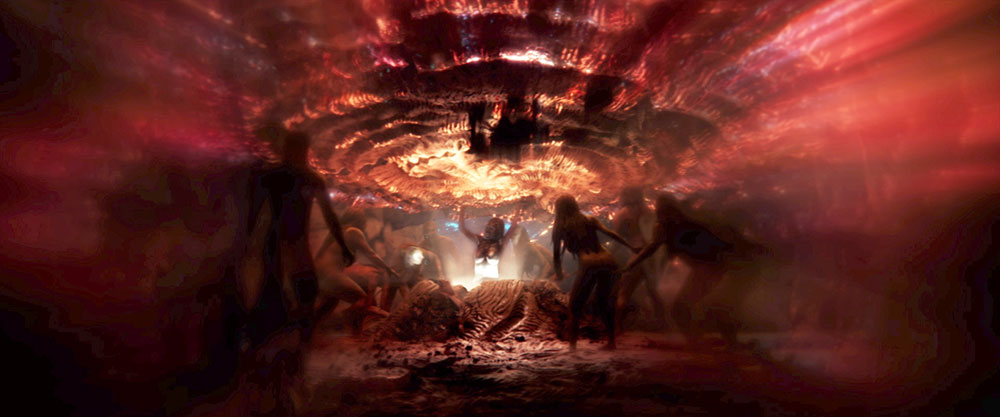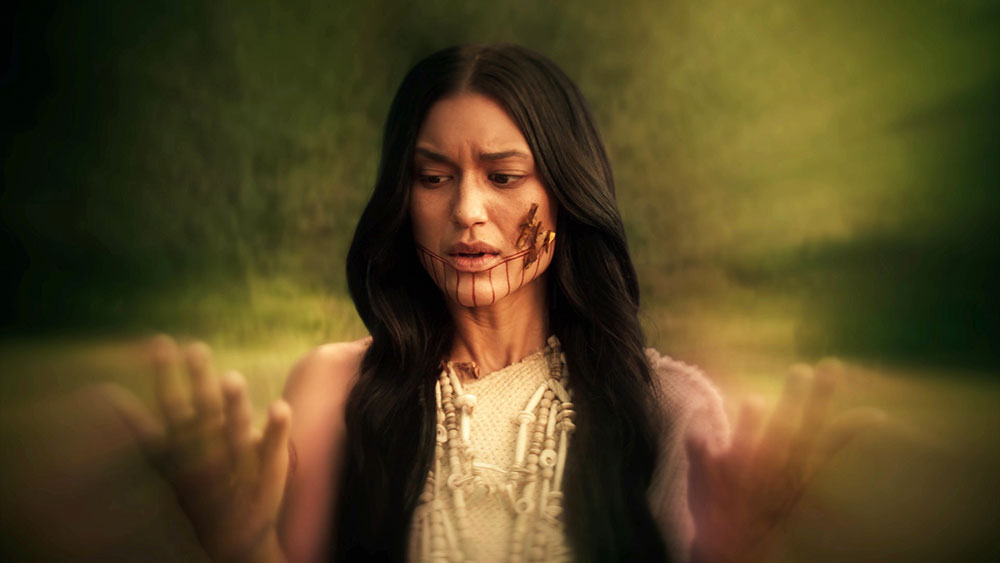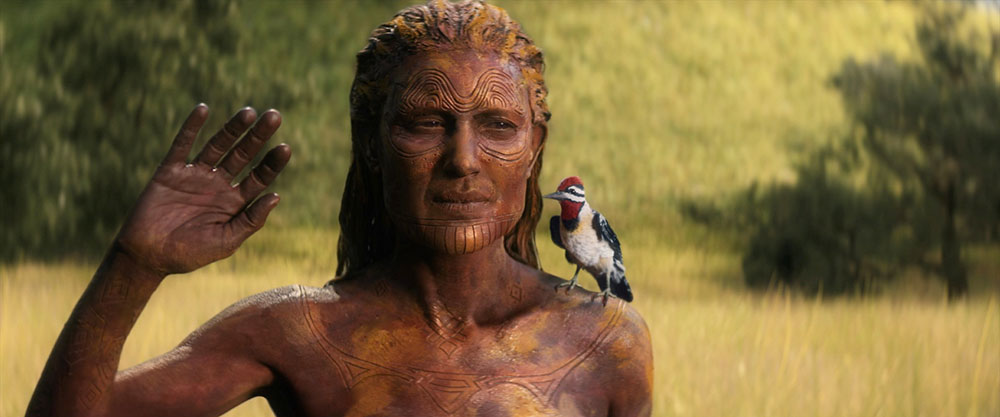Digital Domain Visualises a Choctaw Origin Story for Marvel’s New Series ‘Echo’
02.28.24Digital Domain helped visualise the origin story of the Choctaw tribe as a dramatic introduction to the star of Marvel’s new series ‘Echo’ - with photoreal earthquake, water and creature FX.
For the first season of Marvel Studios’ action crime series Echo, Digital Domain helped to visualise the origin story of the Choctaw tribe of Native Americans, whose ancestral home is in the southeastern United States. This origin story is closely linked to Marvel’s hero Echo, aka Maya Lopez, and becomes the audience’s introduction to her character for the series.
Researching the Story
Digital Domain helped from early in pre-production to define the look for many aspects of these sequences, from the design of the environment to the symbology used for the characters. Marvel hired representatives from among the Choctaw people to give appropriate references for the story elements and to help verify the authenticity of the team’s research and work. Digital Domain’s CG Supervisor David Liu said, “We wanted to get the details right and focus on looks and designs specific to the Choctaw tribe, not just randomly pull in general Native American symbology.”
The shoot had been completed before their involvement, which started about a year ahead of delivering shots – a pause in the work occurred at one point to allow time for the production time for some reshoots. Once work resumed, they continued solidly for another four months before completing. Some 300 artists from facilities in North America and India were involved. David said, “Marvel’s team were great collaborators with us on these sequences, generous with their time and always ready with feedback for the artists, which was important considering the challenges we were up against.”
The opening sequence was Digital Domain’s main work, which begins underground in a large, fairly dark cave-like environment, where a woman emerges from a pool of water, illuminated by glowing algae. The woman is Chafa, the legendary first Choctaw, with skin covered in clay. As she gazes down at her hands and dips them into the water, glowing tattoos swirl onto her hand, and other characters approach from the background, also covered in clay. A biskinik bird, which according to the tribe’s tradition is a bringer of news and warnings, arrives and flies into the palms of the woman’s hands.
Then suddenly, the bird flies away and an earthquake starts up, gathering force. As the cave starts to collapse, Chafa holds up the ceiling overhead while the clay people escape to safety. The cave collapses and in the next scene, Chafa and her people are seen in an open field with trees alongside a grass mound. The clay begins to crack and shed from their bodies, and they are revealed in human form. The scene closes with Chafa standing as their leader.
World Underground
This sequence was shot practically, on a set built for the action taking place immediately around the pool. However, to visualise the scope and scale of the destruction and water effects, the Digital Domain team had to recreate and replace the entire cave environment in 3D. The characters were rotoscoped out to preserve their performances, and placed into the 3D recreation.
The built set was lidar-scanned as a base for the rebuild, and as reference for the cave environment extending indefinitely into the background. The scan wasn’t followed as a literal Blueprint but served as reference for style and mood to convey the idea of an entire underground world below the surface of the earth.
“We decided to handle the level of detail in the textures with normal mapping instead of displacement,” said David. “Because we needed to design simulations and effects to destroy everything later, building in the data for a highly detailed environment would have been impractical. The environment artists optimised those limitations and found a mid-ground between looks, satisfying detail and storytelling.”
They worked back and forth with the FX department a few times to ensure the geometry was compatible with the simulations the FX artists were creating to generate the earthquake destruction. The tools used for this kind of work can’t function properly with anomalies and incomplete geometry. The FX work also became animation cues for the animation team, led by Animation Supervisor Arda Uysal. “We used those cues to plan exactly when the parts of the quaking cave should fall in – coordinating with the dust simulations, for instance,” Arda said.
Water and Light
Water is a central feature of the sequence, and also became a particular challenge for the FX team. It needed to interact with the actress as well as with the glowing algae and its distinctive blue light. As the earthquake takes hold, it sloshes violently, and further challenges came as the pool started to break up. It meant creating one effect, to interact with another effect.
“Due partly to all of those interactions, the water took the longest of any part of the project to finalise,” David said. “Our artists continued polishing it throughout production and post. On set, the actress had real water to work with. In the story she was lifting up glowing algae along with the water, which meant replacing the water in her hands.
“But actually, we could manage those kinds of effects. The real challenge remained – does the result really LOOK like water to the audience? You may have transparent liquid in motion, but it still may not look like realistic water in the images. It was a major hurdle to overcome, combining the work of the FX team setting up the Houdini simulations, with the work of the compositing department placing it right into that environment.”
The lighting had to be managed carefully throughout because, during the shoot, the set was well lit from multiple directions, mainly to bring out the actors’ looks and expressions. Yet the story called for near darkness with a light source at the centre from the small area around the glowing pool.
“In other words, the final shots needed clear directional lighting, especially toward the end of the sequence when light shines brightly from the water as the environment breaks up,” David said. “The ambient lighting could be used for that limited area, but other parts of the environment had to be relit using a primary central light source.”
Digital Humans
The use of digital doubles was important for the sequences as well, both inside the cave and later on, especially when we catch up with Chafa and the others above ground. Before the earthquake, as mentioned, efforts were made to roto the actors performing on set and use them in the final shots.
“But sometimes, such as when Chafa emerges from the pool, we needed to completely replace her to handle the water-interaction simulations realistically enough. Only her face was preserved. In the final moments of the earthquake, two other characters were duplicated and replaced also – again, in order to work better with the destruction FX,” said David. Digital Domain’s proprietary scanning techniques were used for these characters, producing data that could be processed by the texturing, modelling and other artists to create an exact duplicate of an actor.
Arda said, “When animating those characters to both replace a real actor in a shot and interact with effects, matchmoving was used and needed to be very precise. Any muscle movement or distinctive aspect of the actor’s build has to be accounted for. This helps any FX work done later, like the shedding clay skin, to stick perfectly.”
Under the Skin
In thosee skin shedding shots, the brief for the skin itself included references of mud drying, cracking and peeling from the surface of the desert floor, and curling up at the edges. Its combination of characteristics meant defining the mud material with care. It required inner and outer textures to interact, and evolved from there. The FX team was responsible for the entire look. They started with the clean character asset, and first turned it into an ‘egg shell’ asset of the mud material that they could break up.
The resulting pieces were then curled up at the edges and deformed as needed, in order to handle the effect in an art-directable way. In particular, the shot of Chafa turning her hands over, back and forth as the tattoos form in her palms and the mud layer drops away, is deceptively simple to look at. The hand motions added tremendous complexity.
Biskinik Bird
The Biskinik bird was both a joy and a frustration for Arda and the animation team. It was beautiful and capable of a full range of bird actions, but the number of shots on screen was relatively small. Like the other effects, it involved the work of several departments at Digital Domain, a little of everything adding up to a lot. Rigging, modelling and rendering were all equally important and dependent on each other.
Since the bird asset had come to them from another vendor, the first task was getting the motion and feather simulations working in their own pipeline, starting from a complex set-up. “The animation required research into the species it was based on, a Sapsucker. The animators watched videos of this bird and then modified its behaviour to match the brief,” Arda said.
“Sapsuckers usually cling to the sides of the trees to search out the sap, their food, but the production wanted to see more of a traditional song bird performance, landing upright and perching on Chafa’s shoulder or hands. Landing, folding its wings, taking off, plus other wing motions, looking around with a specific head rotation – these were the key animations to achieve. Layered on top of those essential motions were the creature effects, small subtle fluttering simulations that made the bird feel truly alive under the skin.”
In the final episode, a Choctaw powwow takes place, showing a large gathering of the tribe and a celebration. The event needed a crowd for some shots, but only very few extras were on set to capture in-camera, constituting about 5 percent of the final crowd. Digital Domain filled in with combinations of animated 3D characters and 2D cards, extending them quite far back into the shots and adjusting them to work with the camera moves. digitaldomain.com
